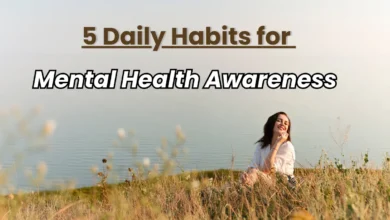Digital Detox for Kids: A New Mental Health Shift

In today’s hyperconnected world, a quiet shift is happening—kids are choosing to log out. That’s right, children and teens are beginning to pull away from screens not because they’re told to, but because they want to feel mentally better. This surprising move, often called a digital detox for kids, is not just a trend. It’s becoming a growing mental health movement—and one worth paying attention to.
Let’s explore what this shift means, why it’s happening, and how we can support it as parents, educators, or anyone who cares about the mental wellbeing of the next generation.
What Is a Digital Detox for Kids?
A digital detox for kids refers to a period when children reduce or completely pause their use of electronic devices—particularly smartphones, tablets, gaming consoles, and social media. This intentional unplugging helps improve focus, sleep, emotional stability, and overall mental health.
Unlike older generations who often struggle to disconnect, many kids are now recognizing the emotional toll of being constantly online. Surprisingly, they’re starting to set boundaries for themselves. And that’s a powerful change.
Why Kids Are Choosing to Unplug
You might think screen time is something children would never give up voluntarily, but recent surveys suggest otherwise. Kids aged 12 to 15 are increasingly limiting app use and taking intentional breaks from social media. But why?
1. Social Media Fatigue and Comparison Stress
Scrolling through highlight reels all day creates unrealistic expectations. Many kids report feeling overwhelmed by the pressure to appear perfect online. As a result, they experience anxiety, loneliness, and even depression.
Taking a break from social media platforms allows them to return to their true selves—without filters, likes, or followers.
2. Desire for Mental Peace and Focus
Constant notifications disrupt the brain’s ability to rest and concentrate. Children who detox from screens often report improved attention spans and better academic performance. Many even feel more emotionally grounded after just a few days offline.
“I deleted TikTok for a week and felt so much calmer. I actually finished my homework early.” — 13-year-old Layla
3. Sleep Disturbance and Eye Strain
Late-night screen exposure interferes with melatonin, which disrupts sleep. Beyond that, the blue light emitted from screens causes eye fatigue. A digital break often results in deeper sleep and increased energy the next day.
Signs Your Child Needs a Tech Break
While all children enjoy screen time, too much of it can harm their emotional and psychological wellbeing. Here are signs your child might benefit from a digital detox:
- They become irritable or anxious when offline
- They use screens to escape real-life problems
- Their academic performance is slipping
- They have trouble sleeping or staying focused
- They avoid outdoor activities or in-person friendships
If any of these signs sound familiar, don’t worry. With the right guidance, kids can easily restore balance.
Benefits of Digital Detox for Kids
The advantages of a digital detox for kids go beyond mental health. This lifestyle shift positively affects physical health, relationships, creativity, and emotional resilience.
1. Boosts Emotional Regulation
Without the rollercoaster of online comments, gaming frustration, or performance anxiety, children often become calmer and more in control of their emotions. This helps reduce tantrums, irritability, and mood swings.

2. Encourages Healthy Real-Life Interaction
Kids who unplug tend to engage more in real-world relationships. They start making eye contact again, ask questions, and participate in meaningful conversations—skills vital for emotional development.
3. Improves Concentration and Academic Focus
Digital distractions make it hard for kids to finish even a 15-minute task. After a detox, their ability to sit down and study or focus on creative hobbies usually improves significantly.
Screen-Free Activities That Encourage Mental Clarity
If you’re wondering what your child will do without their phone or tablet, here are engaging alternatives that spark joy and mental calm:
1. Outdoor Play and Nature Walks
Spending time in nature improves mood and reduces stress. A simple walk, bike ride, or trip to the park can help children reset mentally and emotionally.
2. Reading for Pleasure
Books stimulate imagination in ways that passive screen content can’t. As part of a screen detox, start a family reading challenge or visit the library together
3. Journaling or Drawing
Creative self-expression helps kids process their feelings and develop emotional insight. It’s also a powerful screen-free activity that offers mental calm and doesn’t require Wi-Fi.
4. Family Board Game Nights
Board games encourage patience, cooperation, and face-to-face bonding. These moments can become cherished family traditions that no app can replace.
How Parents Can Support a Digital Detox Journey
Kids may initiate the detox, but they still need support to stay consistent. Here’s how you can help:
1. Set Screen-Free Zones at Home
Designate certain rooms (like the dining area or bedrooms) as screen-free zones. This small step supports a gentle tech break and encourages real interaction, presence, and connection.

2. Be a Role Model
Children mirror adult behavior. If you’re constantly on your phone, it’s hard for them to take the screen break seriously. Support their digital wellness by practicing mindfulness and putting your own devices aside during quality time.
3. Involve Kids in Planning Their Detox
Instead of laying down strict rules, ask for their input. What apps make them feel bad? What do they want to replace screen time with? When they have a say, they’re more likely to stick with it.
Why the Digital Detox for Kids Movement Matters
The digital detox for kids isn’t about demonizing technology. It’s about restoring balance. Kids are showing us that they’re not addicted to screens—they’re just surrounded by them. Once they realize they have a choice, many are choosing peace, clarity, and connection.
This self-led change marks a significant moment in the conversation around childhood mental health. Instead of waiting for adults to intervene, young people are learning to protect their energy—and that’s powerful.
“We don’t always need to be online. Sometimes it feels good to just be bored.”
Conclusion: Encouraging Digital Detox for Kids
This growing movement toward digital detox for kids is more than a parenting goal—it’s a societal shift. And it’s happening now.
By embracing a digital detox for kids, encouraging screen-free activities, and supporting mindful habits, we help children build a strong mental health foundation. They’ll learn that peace doesn’t come from likes or shares—it comes from being present, connected, and real.
So the next time your child says, “I want to delete this app,” smile and say, “Let’s do it together.”
Because sometimes the smartest thing we can do is simply disconnect—and just be.










Thanks for sharing. I read many of your blog posts, cool, your blog is very good.
Your article helped me a lot, is there any more related content? Thanks! https://www.binance.info/pt-PT/register?ref=KDN7HDOR